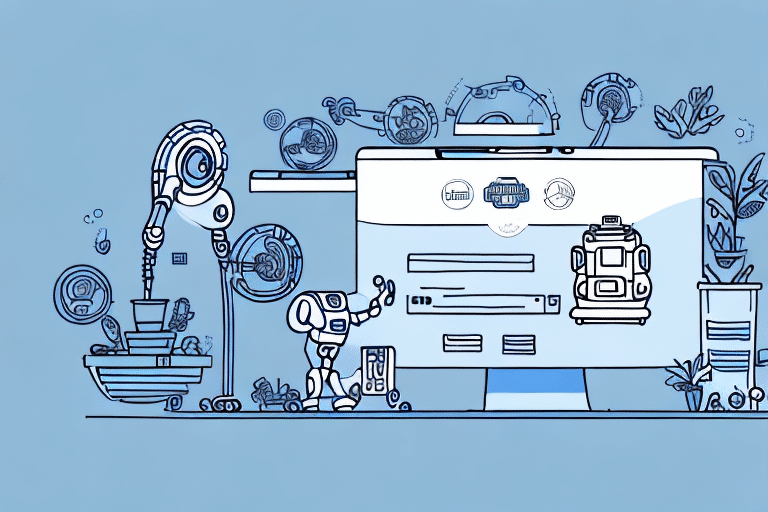Understanding the Importance of Ecommerce Scaling
Ecommerce scaling is essential for business growth, enabling companies to expand their market reach, increase revenue, and enhance their competitive edge. By scaling effectively, businesses can tap into new customer segments, diversify their product offerings, and optimize their operations for greater efficiency.
- Market Expansion: Entering new markets allows businesses to reach a broader audience and increase sales.
- Revenue Growth: Scaling operations typically leads to higher revenue through increased sales volumes.
- Competitive Advantage: Businesses that scale efficiently can outperform competitors by offering better services and products.
According to Statista, global ecommerce sales are projected to reach $6.54 trillion by 2023, highlighting the vast potential for growth in this sector.
Key Technological Advancements in Ecommerce
Mobile Commerce
The rise of mobile commerce has transformed the way consumers shop online. With over 70% of all ecommerce sales expected to originate from mobile devices by 2023, optimizing websites for mobile is no longer optional.
- Responsive Design: Ensures that websites are user-friendly on all devices.
- Mobile Payment Solutions: Facilitates seamless transactions on-the-go.
Research by Shopify indicates that mobile commerce accounts for a significant portion of online sales, underscoring the need for businesses to prioritize mobile optimization.
Artificial Intelligence and Machine Learning
AI and machine learning are revolutionizing ecommerce by personalizing customer experiences and automating operations. These technologies enable businesses to offer tailored product recommendations, enhance customer service through chatbots, and optimize inventory management.
- Personalization: Delivers customized shopping experiences based on user behavior.
- Automation: Streamlines processes such as customer support and inventory tracking.
A study by McKinsey suggests that AI can significantly boost ecommerce efficiency and customer satisfaction.
Virtual and Augmented Reality
Virtual Reality (VR) and Augmented Reality (AR) technologies provide immersive shopping experiences, allowing customers to visualize products in their own environments before making a purchase.
- Product Visualization: Enhances the ability to see products in 3D or in real-life settings.
- Interactive Experiences: Engages customers through interactive and immersive interfaces.
According to Forbes, the integration of VR and AR in ecommerce is expected to drive higher engagement and conversion rates.
Challenges in Implementing New Technology
High Implementation Costs
Integrating advanced technologies can be costly, especially for small and medium-sized enterprises (SMEs). The initial investment required for technology acquisition, implementation, and maintenance can be a significant barrier.
- Budget Constraints: Limited financial resources can hinder technology adoption.
- Return on Investment: Uncertainty about the ROI can make businesses hesitant to invest.
According to PwC, businesses often struggle to balance the costs and benefits of new technology investments.
Skill Gaps and Training
Implementing new technologies requires that staff possess the necessary skills to operate and manage them effectively. Training employees and overcoming skill gaps can be time-consuming and resource-intensive.
- Employee Training: Ensures that staff can effectively use new technologies.
- Talent Acquisition: May require hiring new talent with specialized skills.
A report by Gartner emphasizes the importance of continuous training and talent development in technology implementation.
Data Security and Privacy Concerns
With the integration of new technologies, especially those involving data collection and processing, businesses must prioritize data security and privacy to protect customer information and comply with regulations.
- Regulatory Compliance: Adhering to laws such as GDPR and CCPA.
- Cybersecurity Measures: Implementing robust security protocols to prevent data breaches.
According to Cyber.gov.au, data breaches can have severe financial and reputational consequences for ecommerce businesses.
Selecting and Integrating the Right Technologies
Aligning Technology with Business Goals
When selecting new technologies, it's crucial to ensure they align with your overall business objectives. Technologies should support your strategic goals, whether it's enhancing customer experience, increasing operational efficiency, or expanding product offerings.
- Strategic Fit: Ensures that technology investments support business growth.
- Scalability: Technologies should be able to grow with your business needs.
The Harvard Business Review highlights the importance of strategic alignment in technology investments.
Evaluating Technology Vendors
Choosing the right technology vendor is essential for successful implementation. Consider factors such as vendor reputation, customer support, scalability, and integration capabilities.
- Vendor Reliability: Assessing the track record and reliability of the vendor.
- Support Services: Availability of customer support and training resources.
A Forrester report outlines key considerations for selecting technology vendors that can meet your ecommerce needs.
Implementing Robust Integration Strategies
Effective integration strategies are vital for ensuring that new technologies work seamlessly with existing systems. This includes planning for data migration, system compatibility, and process alignment.
- Data Integration: Ensuring smooth data flow between systems.
- System Compatibility: Verifying that new technologies can integrate with current platforms.
The TechRepublic provides best practices for technology integration to minimize disruptions and maximize efficiency.
Evaluating and Optimizing Your Technology Stack
Conducting Comprehensive Technology Audits
Regularly auditing your technology stack helps identify outdated systems, redundancies, and areas for improvement. This proactive approach ensures that your technology infrastructure remains efficient and up-to-date.
- Performance Assessment: Evaluating the effectiveness of current technologies.
- Gap Analysis: Identifying missing technologies that can enhance operations.
According to CIO Review, regular technology audits are critical for maintaining a competitive edge in the ecommerce landscape.
Measuring Technology Performance
Implementing metrics and key performance indicators (KPIs) helps assess the performance of your technology stack. Metrics such as system uptime, response times, and user satisfaction can provide valuable insights.
- System Uptime: Measures the reliability of your technology systems.
- User Satisfaction: Gauges the effectiveness of technologies from the user's perspective.
A study by Gartner emphasizes the role of performance metrics in optimizing technology investments.
Continuous Improvement and Optimization
Technology integration is an ongoing process. Continuously optimizing your technology stack ensures that your ecommerce operations remain efficient and responsive to changing market demands.
- Regular Updates: Keeping systems updated with the latest features and security patches.
- Feedback Loops: Incorporating user feedback to improve technology performance.
The Forbes Technology Council discusses the importance of continuous optimization in technology management.
Data Analytics and Security in Ecommerce Integration
The Role of Data Analytics
Data analytics is pivotal in understanding customer behavior, optimizing marketing strategies, and improving overall business performance. By leveraging data, ecommerce businesses can make informed decisions that drive growth.
- Customer Insights: Analyzing data to understand customer preferences and behavior.
- Predictive Analytics: Forecasting trends and customer needs to stay ahead of the competition.
According to McKinsey, data-driven companies are 23 times more likely to acquire customers, highlighting the importance of analytics in ecommerce.
Ensuring Data Security and Compliance
With increasing cyber threats, ensuring data security is paramount for ecommerce businesses. Implementing robust security measures protects customer information and maintains trust.
- Encryption: Securing data transmission to prevent unauthorized access.
- Compliance: Adhering to regulations such as GDPR and CCPA to avoid legal penalties.
CISecurity outlines best practices for maintaining security in ecommerce platforms.
Leveraging Data for Personalization
Personalizing the shopping experience based on data insights can significantly enhance customer satisfaction and loyalty. Techniques include personalized product recommendations and targeted marketing campaigns.
- Recommendation Engines: Suggesting products based on user behavior and preferences.
- Targeted Marketing: Creating personalized marketing messages to engage specific customer segments.
A report by Emarsys indicates that personalized marketing can lead to a 20% increase in sales.
Future Trends and Best Practices in Ecommerce Technology
Embracing Omnichannel Strategies
Omnichannel strategies integrate online and offline channels to provide a seamless customer experience. This approach ensures consistency across all touchpoints, enhancing customer satisfaction and loyalty.
- Unified Customer Experience: Maintaining consistency in branding and service across platforms.
- Integrated Systems: Ensuring that online and offline systems communicate effectively.
The Forrester highlights the growing importance of omnichannel strategies in ecommerce.
Adopting Sustainable Technologies
Sustainability is becoming a key consideration in ecommerce. Adopting eco-friendly technologies not only reduces environmental impact but also appeals to environmentally conscious consumers.
- Green Hosting Solutions: Using data centers powered by renewable energy.
- Sustainable Packaging: Implementing eco-friendly packaging materials and practices.
According to Sustainability Times, sustainable practices are increasingly influencing consumer purchasing decisions.
Enhancing Customer Engagement with Interactive Technologies
Interactive technologies such as chatbots, live streaming, and interactive product displays enhance customer engagement by providing real-time assistance and immersive experiences.
- Chatbots: Offering instant customer support and reducing response times.
- Live Streaming: Engaging with customers through live product demonstrations and events.
A survey by Business.com shows that interactive technologies significantly improve customer engagement and satisfaction.
Avoiding Common Mistakes in Technology Integration
Ignoring Customer Needs
One of the most common mistakes is failing to consider the actual needs and preferences of customers when integrating new technologies. This can lead to poor adoption and negative customer experiences.
- Customer-Centric Approach: Prioritizing technologies that enhance the customer experience.
- Feedback Mechanisms: Collecting and acting on customer feedback to guide technology decisions.
According to CustomerThink, understanding and addressing customer needs is crucial for successful technology integration.
Investing in Misaligned Technologies
Investing in technologies that do not align with business objectives can result in wasted resources and missed opportunities. It's essential to ensure that every technology adoption supports the overall business strategy.
- Strategic Alignment: Ensuring technology choices support long-term business goals.
- ROI Assessment: Evaluating the potential return on investment before committing resources.
A report by Harvard Business Review discusses the importance of strategic alignment in technology investments.
Lacking a Clear Implementation Plan
Without a well-defined implementation plan, integrating new technologies can lead to confusion, delays, and operational disruptions. A clear plan outlines the steps, timelines, responsibilities, and success metrics for the integration process.
- Defined Timelines: Setting realistic deadlines for each phase of integration.
- Responsibility Allocation: Clearly assigning roles and responsibilities to team members.
The Project Manager emphasizes the importance of a detailed implementation plan for successful technology integration.
Training Your Team for Effective Technology Adoption
Developing Comprehensive Training Programs
Effective training programs ensure that your team is well-equipped to use new technologies. Comprehensive training covers the functionalities, benefits, and best practices related to the new systems.
- Hands-On Training: Providing practical experience with the new technology.
- Continuous Learning: Offering ongoing training to keep up with technology updates.
A study by ATD highlights the effectiveness of comprehensive training programs in technology adoption.
Encouraging Team Engagement
Engaging your team in the technology adoption process fosters a sense of ownership and reduces resistance to change. Encouraging feedback and involving employees in decision-making can enhance the integration process.
- Feedback Loops: Collecting input from team members to improve technology usage.
- Inclusive Decision-Making: Involving employees in selecting and implementing new technologies.
Business News Daily discusses strategies for increasing employee engagement during technology transitions.
Providing Ongoing Support
Ongoing support ensures that employees can effectively use new technologies and troubleshoot any issues that arise. Providing resources such as help desks, documentation, and regular check-ins can facilitate a smooth transition.
- Help Desks: Offering immediate assistance for technical issues.
- Resource Libraries: Maintaining documentation and tutorials for reference.
The Forbes Human Resources Council emphasizes the necessity of ongoing support in technology adoption.
Measuring the ROI of Technology Integration
Defining Clear Key Performance Indicators (KPIs)
Establishing clear KPIs is essential for measuring the return on investment (ROI) of technology integrations. KPIs should align with your business objectives and provide measurable outcomes.
- Sales Metrics: Tracking changes in sales volumes and revenue.
- Operational Efficiency: Measuring improvements in processes and cost reductions.
The Inc. Guide outlines best practices for defining and measuring KPIs to assess ROI.
Utilizing A/B Testing
A/B testing allows businesses to compare different versions of a technology implementation to determine which performs better. This method provides data-driven insights into the effectiveness of new technologies.
- Version Comparison: Testing different features or layouts to see which yields better results.
- Data-Driven Decisions: Making informed choices based on test outcomes.
A report by Optimizely highlights the benefits of A/B testing in optimizing technology implementations.
Analyzing Customer Feedback
Customer feedback provides valuable insights into how new technologies are impacting the shopping experience. Analyzing this feedback helps identify areas for improvement and ensures that technology integrations meet customer expectations.
- Surveys and Reviews: Collecting direct feedback from customers.
- Behavioral Analysis: Monitoring customer interactions to identify pain points.
The Qualtrics platform underscores the importance of customer feedback in evaluating technology effectiveness.
Conclusion
Integrating new technology is a pivotal component of ecommerce scaling, offering numerous benefits such as enhanced customer experiences, increased operational efficiency, and greater market reach. However, it also presents challenges that must be carefully managed through strategic planning, effective training, and continuous optimization. By following best practices and staying informed about technological advancements, ecommerce businesses can successfully navigate the complexities of technology integration and achieve sustainable growth.






















